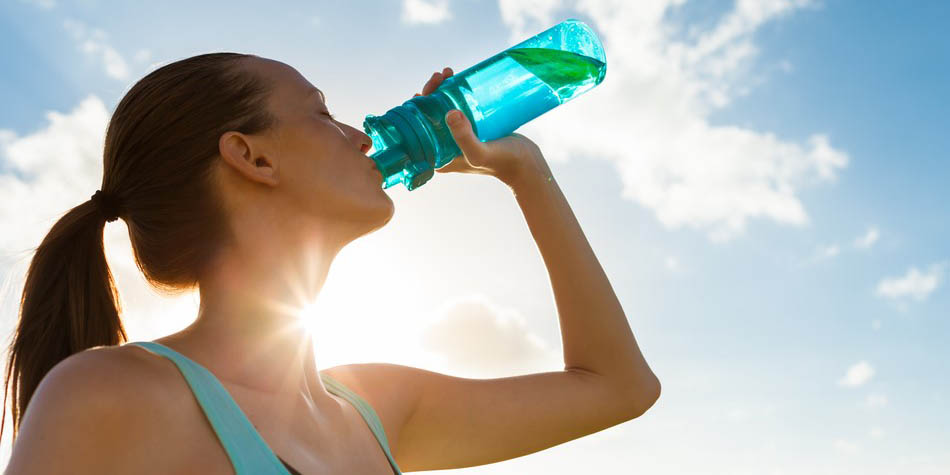
Heat-related illnesses can affect anyone who is exposed to heat for a prolonged period of time without relief or adequate hydration.
Now that summer is here, more people are spending time outdoors to enjoy the warm weather. While it can be easy to lose track of time when you're enjoying yourself, it's important to be aware of heat-related illnesses and take precautions to avoid them.
What is a heat-related illness?
Heat-related illnesses are caused by high temperatures and humidity. They can occur when someone is exposed to heat for a prolonged period without adequate fluid intake or relief, such as standing in the shade or going into a building. There are several types of heat illnesses, some more serious than others. Fortunately, they are often preventable if you know how to prepare for the heat.
Heatstroke
Heatstroke, also known as sunstroke, is the most severe heat illness. It occurs when the body cannot control its internal temperature, and it can be fatal if it is not treated quickly. There are two types of heatstroke:
- Exertional: Exertional heatstroke is associated with physical activity and usually occurs when someone has overexerted themselves in hot, humid conditions. It generally develops within a few hours and is most likely to occur in people who are not used to high temperatures.
- Non-exertional: Non-exertional, or classic, heatstroke occurs when exposure to a hot environment causes an increase in core body temperature. Non-exertional heatstroke is more common among older adults and people with chronic illness, and it usually develops within a few days.
Symptoms of heatstroke include:
- Dizziness
- Seizures
- Weakness
- Nausea and vomiting
- Confusion
Heatstroke can typically be prevented by staying hydrated and wearing appropriate clothing. It's also important to take it easy if you're going to be outside during the hottest parts of the day.
Heat rash
Heat rash, also known as prickly heat or miliaria, occurs when sweat gets trapped in the pores, causing a very itchy rash that looks like a cluster of blisters. It most commonly appears in skin folds and areas where clothing rubs against the skin. Heat rash can be prevented by wearing loose cotton clothing and drinking plenty of fluid to avoid dehydration. If you do get heat rash, you can soothe it by applying a damp cloth or ice pack to the affected area for up to 20 minutes.
Heat exhaustion
Heat exhaustion is the body's response to losing large amounts of water and salt, usually due to excessive sweating. The symptoms can develop suddenly or over time. Symptoms include:
- Dizziness
- Fatigue
- Faintness
- Muscle cramps
- Nausea
- Headache
Similar to preventing heatstroke and heat rash, heat exhaustion can be prevented by wearing lightweight, light-colored and loose-fitting clothing. Sunblock or sunscreen can also help to prevent heat illnesses. Be sure to reapply it as necessary. Additionally, be sure to pace yourself if you're going to engage in any kind of physical activity outdoors.
Heat cramps
Heat cramps are painful, involuntary muscle spasms that occur as a result of dehydration and a loss of electrolytes. They can lead to other heat illnesses, such as heatstroke, and can be caused by strenuous activity in hot weather. Heat cramps are usually brief, but they can also come and go. They typically go away on their own, but they can be relieved by hydrating and resting.
Who is at risk for heat illnesses?
While heat-related illnesses can affect anyone, infants and children up to age 4 and people 65 and older have the greatest risk. People who are on certain medications, have an underlying illness, or are overweight are also at risk.
If you suspect that you or someone else has a heat illness, the first thing you should do is get out of the heat and into a shady or air-conditioned area. Note that a fan alone may not provide enough relief. You should also remove any heavy or restrictive clothing, and cool down and rehydrate by drinking cold water or a sports drink with electrolytes.
If your, or someone else's, condition worsens due to heat-related illness, call 911 or a local emergency number right away. If left untreated, heat exhaustion can lead to heatstroke, which can be life-threatening.
Taking proper precautions when the weather is hot can help prevent heat-related illnesses. If you or a loved one develop a heat illness, it is important to act quickly to prevent further injury or illness.